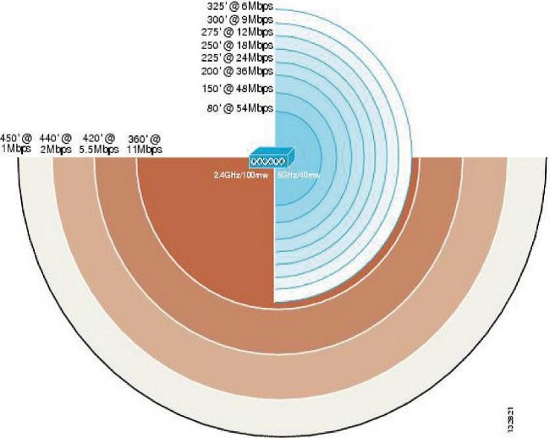Cisco 300-360 Designing Cisco Wireless Enterprise Networks Online Training
Cisco 300-360 Online Training
The questions for 300-360 were last updated at Dec 13,2025.
- Exam Code: 300-360
- Exam Name: Designing Cisco Wireless Enterprise Networks
- Certification Provider: Cisco
- Latest update: Dec 13,2025
A customer has deployed an N+N redundant wireless infrastructure. In this deployment, the access points have been salt and peppered between controllers.
What configuration would be necessary to cut down on the use of mobility tunnels for voice clients?
- A . mobility anchor
- B . KIS based CAC
- C . media session snooping
- D . re-anchor roamed voice clients
An engineer is assigned to provide wireless coverage in a provincial capital building. Due to the age and historic nature of the building, the ability to run new copper Ethernet cable to desired AP locations is limited.
Which requirement should the engineer specify to overcome this restriction?
- A . Deploy access points where the survey indicates and connect them via fiber optic cable, using a media adapter, and locally provide power.
- B . Deploy access points to each phone location converting two spare pairs of copper from the phone line to Ethernet and locally provide power.
- C . Deploy access point devices where limited cable can be run or exists and connect high-gain antennas and increase Tx power to increase cell size.
- D . Deploy RAP where limited cable can be run or exists, and extend coverage using MAP.
Which two steps are associated with the active portion of the audit when a post-installation audit is performed with an auditing tool such as Ekahau? (Choose two.)
- A . Check for co-channel interference by standing near an access point on one channel and watching for other access points that are on the same channel.
- B . Verify smooth roaming.
- C . Check to see if the signal level on other access points that are heard on the same channel is at least 19 dBm weaker than the access point that you are next to.
- D . Check that all channels are supported by the APs, regardless of client capabilities.
- E . Verify that the network traffic of physical data rate and packet loss meets user requirements.
A downstream packet that contains a DSCP value arrives at the WLC Ethernet interface from the wired source network. The WLC is configured for QoS WLAN 802.1p mapping.
How does the WLC treat the CAPWAP QoS marking when leaving the controller interface for the respective AP and final wireless client destination?
- A . No outer CAPWAP or inner QoS tagging is applied.
- B . The outer CAPWAP CoS is marked and capped and the inner DSCP maintains the original marking.
- C . No outer CAPWAP QoS tag is applied, but the original DSCP is maintained inside CAPWAP.
- D . The outer CAPWAP DHCP is marked and capped without any inner DSCP value.
An engineer is planning for a 24 Mbps data rate on the 5Ghz band for a new installation.
What is the coverage area from the AP if the environment and other factors are not taken into consideration?
- A . 225 feet
- B . 80 feet
- C . 150 feet
- D . 100 feet
A customer is deploying a mesh outdoor wireless network based on FCC standards where spectrum analysis shows significant radar energy propagating throughout the coverage area from a local weather station.
Which channel must be excluded from the access points RRM calculation to avoid network disruption due to weather radar activity?
- A . 132
- B . 44
- C . 11
- D . 36
An engineer installed a 3702 AP and is getting power from the switch.
What is the reason for getting 3×3 MIMO instead of 4×4?
- A . 802.1p
- B . 802.3af
- C . 802.11e
- D . 802.3at
An engineer is deploying centralized wireless solution with a 5508 controller.
What is the most AP licenses that can be supported?
- A . 100
- B . 250
- C . 1000
- D . 500
An engineer is preparing for an active site survey of a warehouse and is informed that they should not enter any areas that are blocked by supplies that are difficult to move.
Which option describes how the engineer should address this restriction?
- A . Extrapolate restricted access areas by drawing circles for AP coverage
- B . Survey hallways, common areas, and storerooms.
- C . Utilize a predictive tool to define coverage in off-limits areas.
- D . Educate the customer about the importance of accurate and complete measurements.
Refer to the exhibit.

While testing the post-deployment WLAN network, you discover that an AP has been placed in a difficult
area. The AP cannot be moved easily because of various requirements. The client performance of various Apple and Microsoft operating system-based products does not meet expectations.
Which two options can help mitigate the performance issue? (Choose two.)
- A . Add additional APs.
- B . Increase the AP power level to maximum.
- C . Rotate the AP 90 degrees to change antenna polarity.
- D . Replace the AP with an AP and external antenna.
- E . Change the AP location to one that is less RF hostile.
Latest 300-360 Dumps Valid Version with 221 Q&As
Latest And Valid Q&A | Instant Download | Once Fail, Full Refund


